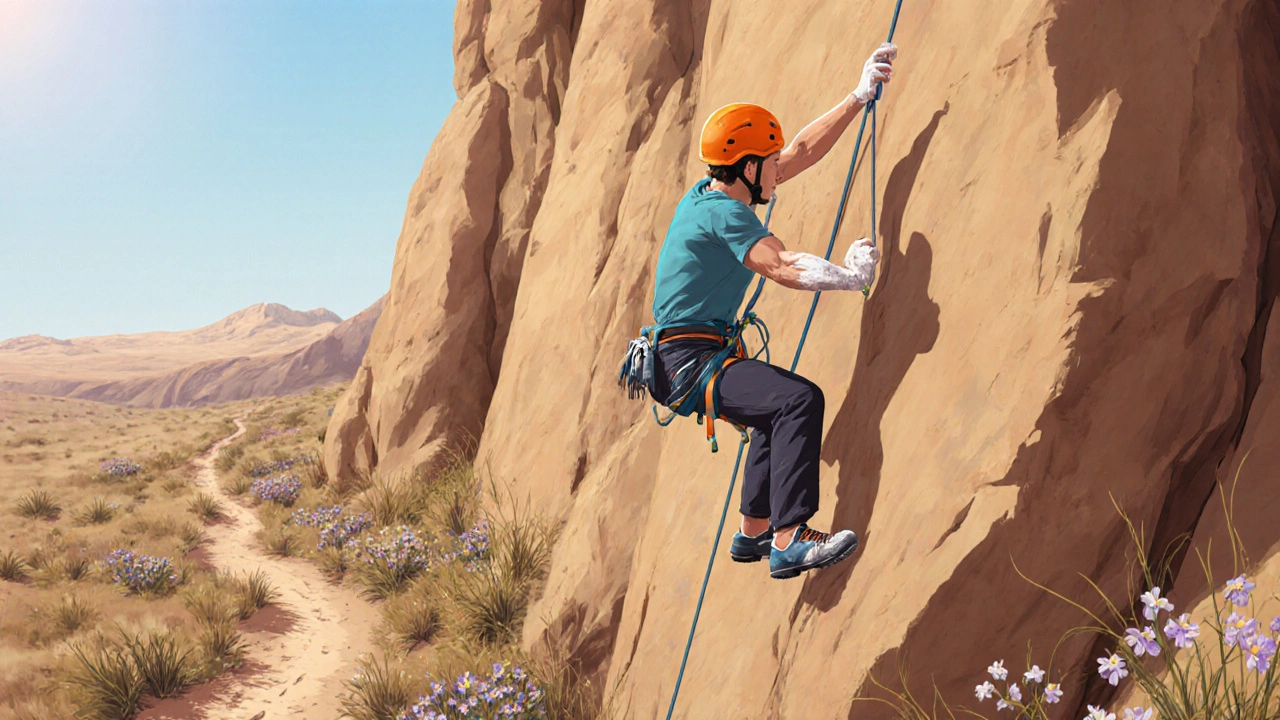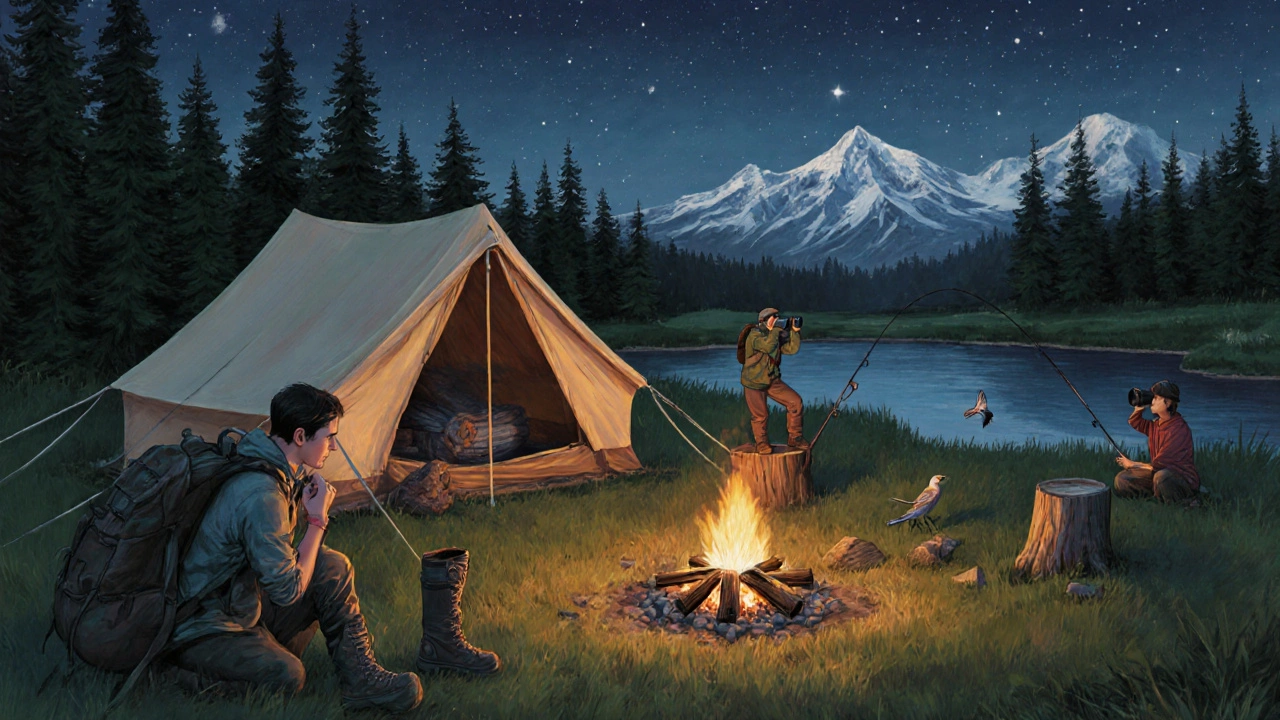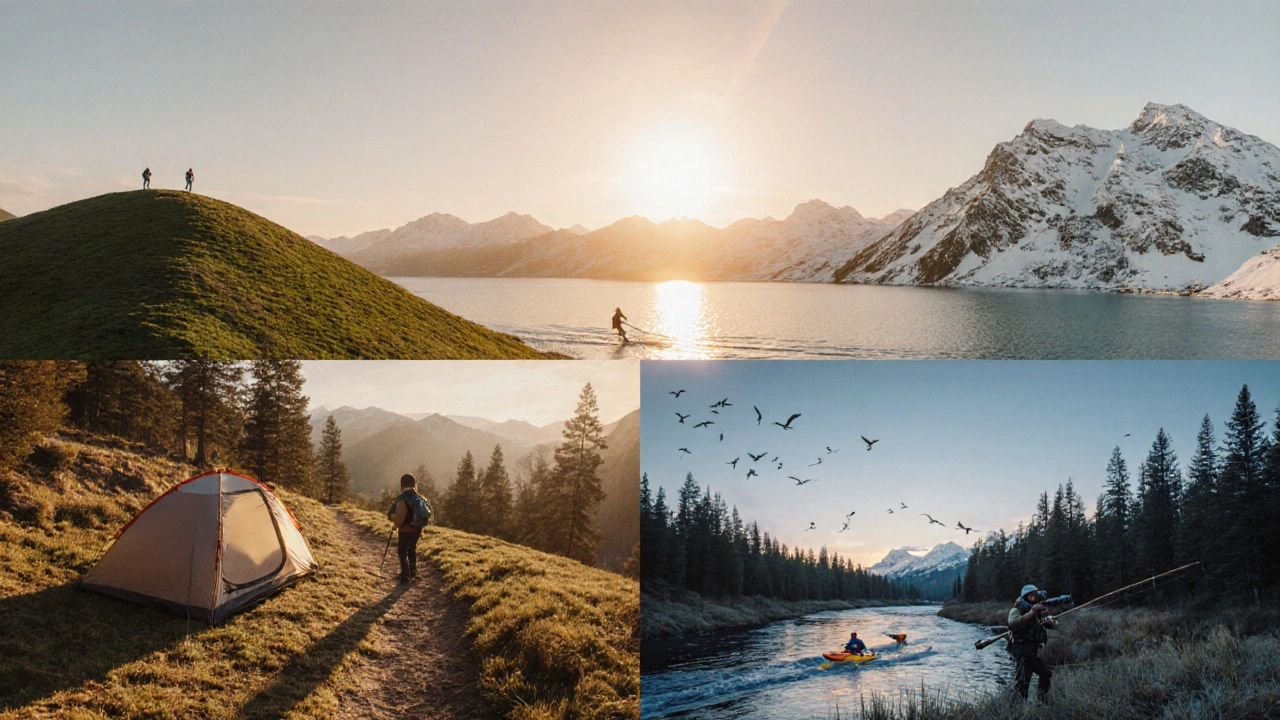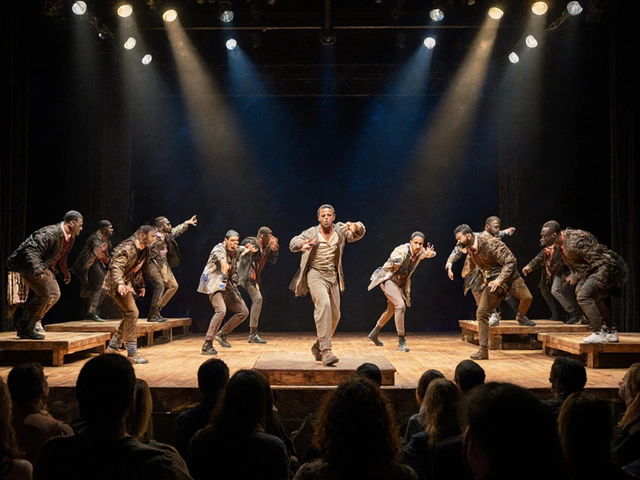Outdoor Activity Selector
Adventure Sports
Medium-HighRock climbing, mountain biking, zip-lining
Water Activities
Low-MediumKayaking, surfing, snorkeling, fishing
Winter Sports
MediumSkiing, snowboarding, snowshoeing, ice skating
Hiking & Trekking
Low-HighTrail walking, backcountry adventures
Cycling
Low-MediumRoad biking, mountain biking, commuting
Camping
Low-MediumTent camping, hammock camping, RV trips
When you think about getting outside, the possibilities stretch far beyond a simple walk in the park. People chase waves, climb cliffs, track wildlife, and ski down powdery slopes, all under the umbrella of outdoor activities. Understanding how these pursuits group together helps you pick the right adventure for your skill level, equipment budget, and the season you live in.
Quick Takeaways
- Outdoor activities split into four broad buckets: land‑based, water‑based, winter‑focused, and mixed‑environment.
- Each category has a typical difficulty range, essential gear, and best‑time‑of‑year.
- Mixing categories (like camping + hiking) boosts enjoyment and keeps costs manageable.
- Safety basics-weather checks, proper gear, and local regulations-apply across all groups.
- Start small, then scale up as confidence and fitness improve.
Land‑Based Adventures
Adventure Sports are high‑energy pursuits that test strength, coordination, and courage. Think rock climbing, mountain biking, zip‑lining, or trail running. These activities usually demand specialized equipment (helmets, harnesses, sturdy shoes) and a moderate to high fitness level. Most adventure sports shine in spring and autumn when weather is stable but terrain remains dry.
Safety tip: Always inspect gear before each outing and consider a local guide for first‑time attempts.
Water‑Based Fun
Water Activities encompass anything that happens on or near water bodies. Popular choices include kayaking, paddleboarding, surfing, snorkeling, and fly‑fishing. Required gear varies-from a simple paddle and life jacket to a full wetsuit and snorkel set. Warm months drive participation, though temperate climates support year‑round paddling with the right apparel.
Key habit: Check water conditions (tide, currents, wind) before launching.
Winter‑Focused Sports
Winter Sports are activities that thrive on snow and ice. Classic examples are skiing, snowboarding, ice skating, and snowshoeing. Equipment ranges from skis and boots to insulated outerwear and avalanche safety kits. The prime window runs from December through March, depending on latitude.
Remember: Layer wisely-base, insulating, and shell layers keep you warm without overheating.

Hiking & Trekking
Hiking & Trekking involve walking on marked trails or remote backcountry routes. These pursuits suit beginners and seasoned walkers alike. Minimal gear (sturdy shoes, backpack, water) gets you started, while long treks may need navigation tools, camping gear, and first‑aid kits. Seasons depend on altitude-low‑elevation hikes are great year‑round; high‑altitude treks peak in summer.
Cycling
Cycling covers road riding, mountain biking, and hybrid commuting. Essential gear includes a bike, helmet, and appropriate tires. Road cyclists often ride spring to fall on paved routes, whereas mountain bikers chase muddy trails in late summer.
Camping
Camping lets you sleep under the stars, whether in a tent, hammock, or RV. Basic supplies are shelter, sleeping bag, and fire‑starter. Campsites operate seasonally; temperate zones offer spring‑to‑autumn options, while northern locales favor summer months.
Birdwatching & Wildlife Observation
Birdwatching (and broader wildlife observation) focuses on spotting and identifying fauna in natural habitats. All you need is a pair of binoculars, a field guide, and patience. Early mornings in spring and fall provide the richest sightings.
Fishing
Fishing ranges from casual pond casting to deep‑sea angling. Gear includes rod, reel, bait, and appropriate licensing. Seasons are dictated by fish spawning cycles-many freshwater species bite best in spring and early summer.

Climbing (Bouldering & Trad)
Climbing splits into gym bouldering, sport climbing, and traditional (trad) routes. Essential gear: climbing shoes, chalk bag, and for trad-harness, rope, and protection devices. Indoor gyms operate year‑round; outdoor crags depend on weather, usually thriving in dry summer months.
Comparison of Major Outdoor Activity Categories
| Category | Typical Difficulty | Core Gear | Best Season | Common Safety Note |
|---|---|---|---|---|
| Adventure Sports | Medium‑High | Helmet, harness, specialized shoes | Spring / Autumn | Inspect gear; use a spotter or guide |
| Water Activities | Low‑Medium | Paddle, life jacket, wetsuit (optional) | Summer / Warm months | Check tides, currents, weather forecast |
| Winter Sports | Medium | Ski/snowboard, insulated layers, avalanche kit | Dec‑Mar (varies by region) | Dress in layers; stay aware of avalanche risk |
| Hiking & Trekking | Low‑High (depends on trail) | Boots, backpack, water | Varies by altitude; generally spring‑fall | Carry navigation tools; inform someone of route |
| Cycling | Low‑Medium | Bike, helmet, appropriate tires | Spring‑Autumn | Wear visible clothing; follow traffic rules |
| Camping | Low‑Medium | Tent/hammock, sleeping bag, fire starter | Spring‑Autumn (depends on climate) | Check fire bans; store food securely |
| Birdwatching | Low | Binoculars, field guide | Early morning, spring‑fall migrations | Stay quiet; respect wildlife habitats |
| Fishing | Low‑Medium | Rod, reel, bait, license | Spring‑early summer (species dependent) | Follow local regulations; handle fish gently |
Choosing the Right Category for You
Start by asking three simple questions:
- What physical effort am I comfortable with? (Low, moderate, high)
- Do I have any equipment already, or am I willing to invest?
- Which season or climate am I planning for?
Match your answers to the table above. If you’re a beginner with limited gear, birdwatching or casual hiking offers a low barrier to entry. If you crave adrenaline and already own a helmet and sturdy shoes, jump into adventure sports. Seasonal constraints also guide you-swap skiing for mountain biking when the snow melts.
Safety Basics Across All Activities
Regardless of category, follow these universal practices:
- Check the weather forecast 24‑hours ahead.
- Tell a friend or family member your route and expected return time.
- Carry a basic first‑aid kit and know how to use it.
- Dress in layers that can be added or removed quickly.
- Stay hydrated and snack regularly-energy dips happen fast outdoors.
Frequently Asked Questions
Which outdoor activity is best for beginners?
Walking‑based options like birdwatching, casual hiking, or basic kayaking require minimal gear and low physical intensity, making them ideal first steps.
Do I need a special license for any of these activities?
Fishing almost always requires a local permit. Some climbing areas ask for access fees, and certain winter backcountry zones need avalanche safety certifications. Always check local regulations before you go.
How can I keep costs low when trying new outdoor sports?
Rent gear from local outfitters for the first few trips, join community groups for equipment swaps, and start with public lands that have free access. Many parks also offer day‑pass discounts.
What’s the best way to stay safe during winter sports?
Layer your clothing, check avalanche forecasts, carry a beacon, shovel, and probe, and never venture out alone unless you’re seasoned and have a rescue plan.
Can I combine multiple categories on a single trip?
Absolutely. A weekend camping trip can include hiking, birdwatching, and evening fishing. Mixing activities keeps the experience fresh and spreads out equipment costs.





